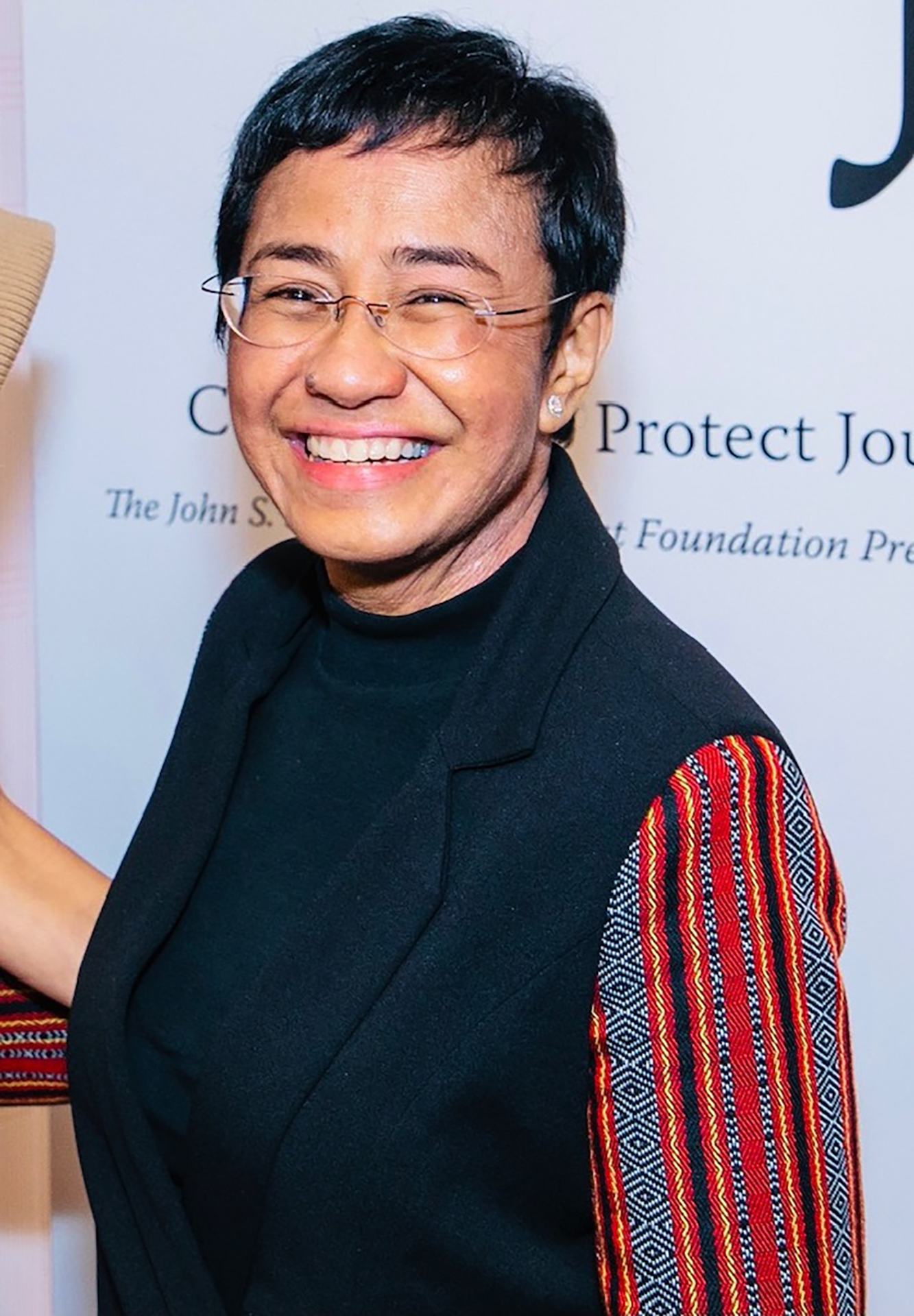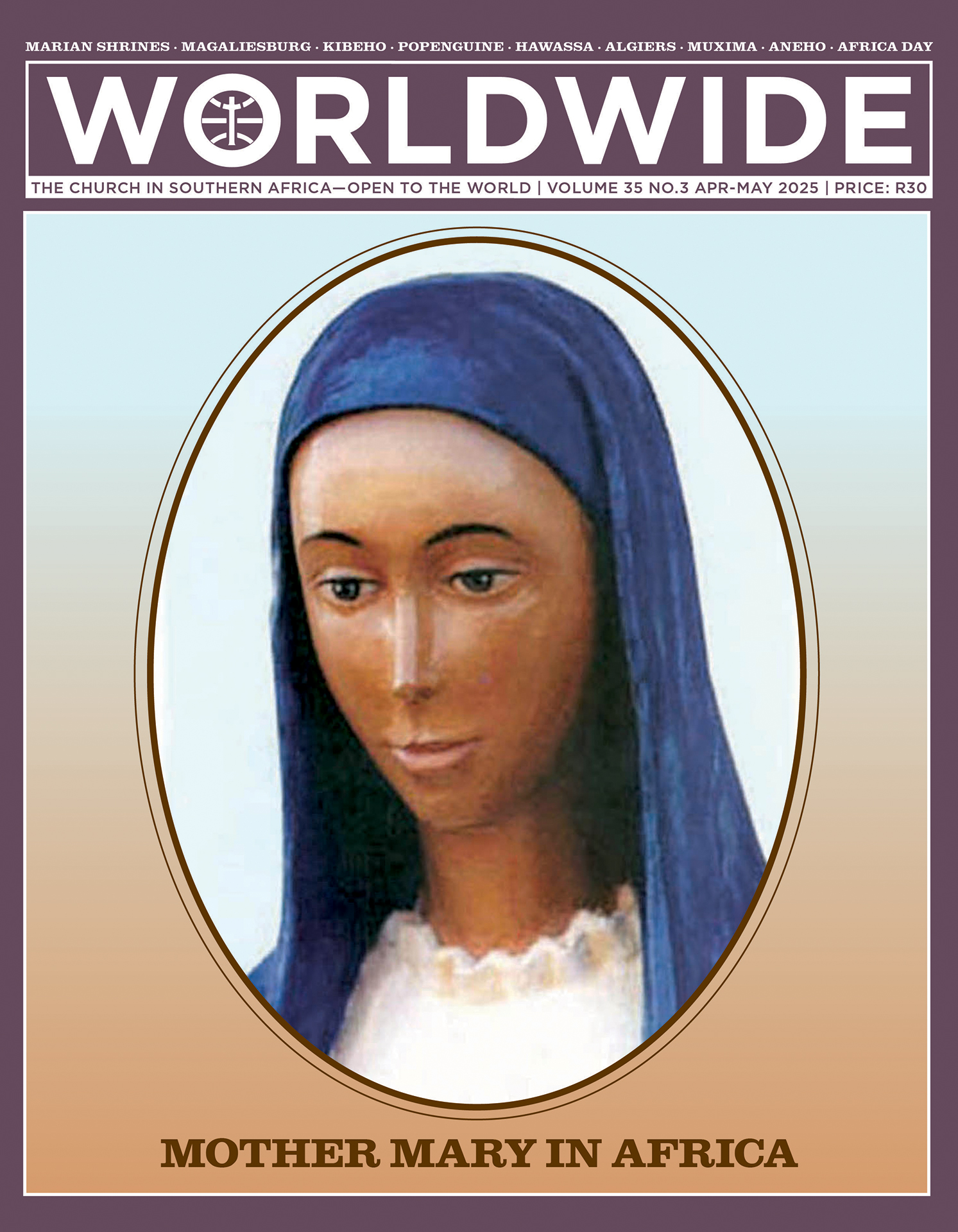
MOTHER MARY IN AFRICA
Head of the Statue of Mother Mary at Kibeho, Rwanda, carved by Marek Kowalski and based on the models of Jean Pierre Sibomana and Faustin Kayitana. In the statue, Mother Mary holds the Seven Sorrows Chaplet, a Marian devotion reintroduced to the Catholic community by Our Lady of Kibeho.
Kibeho is the only Marian apparition on African soil, officially recognized by the Church. Mother Mary’s requests for prayers preluded the 1994 Genocide.
PROFILE • ALPHONSINE, NATHALIE & MARIE CLAIRE
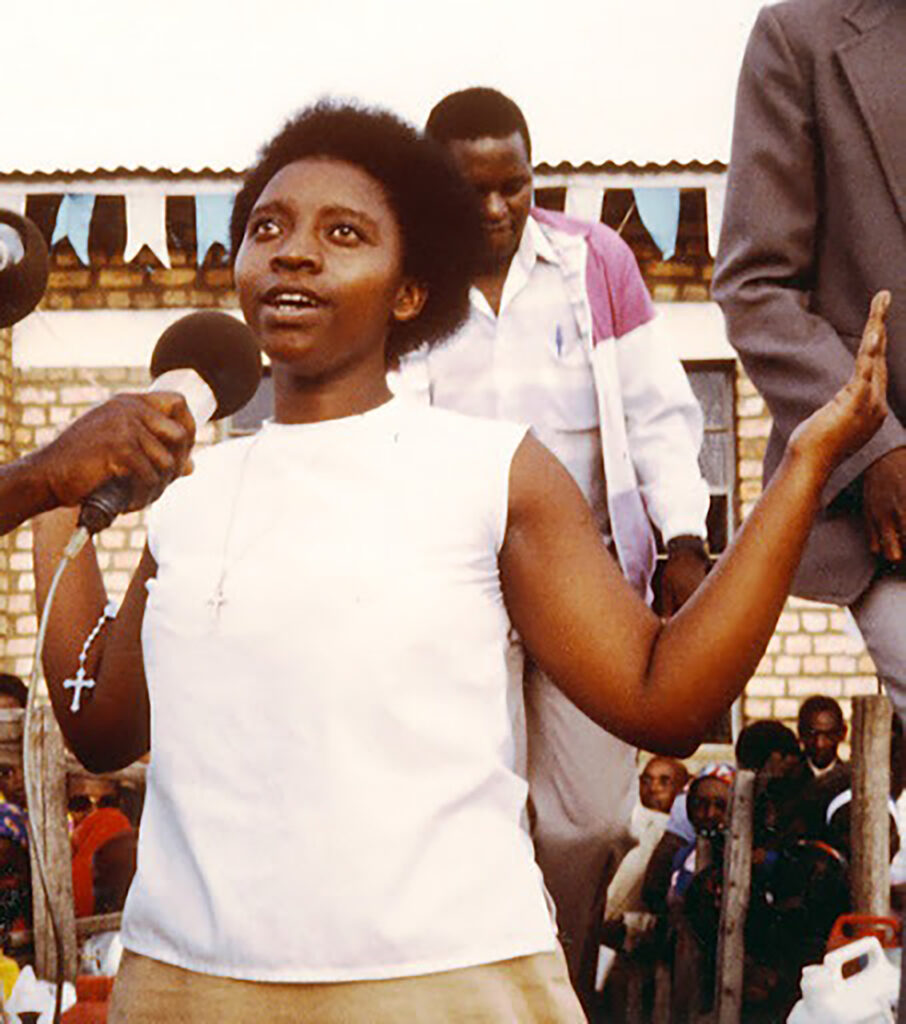
THE THREE YOUNG VISIONARIES AT KIBEHO
In the early 1980’s in Kibeho, Rwanda, three youngsters, Alphonsine Mumureke, Nathalie Mukamazimpaka and Marie Claire Mukangango, had a vision of Mother Mary. The children were ridiculed and rebuked by their peers and adults, but ultimately the apparition was vindicated and the Shrine of Our Lady of Kibeho is now a centre of devotion for the whole continent
BY MARIAN PALLISTER | CHAIR OF PAX CHRISTI SCOTLAND
RWANDA DOESN’T have a good track record. This spectacularly beautiful landlocked country in the Great Rift Valley (beautiful enough indeed to have been the Garden of Eden) where homo sapiens is believed to have evolved some 4 million years ago, is once more making international headlines as a major force behind the violent invasion of the Democratic Republic of Congo.
Few can erase from memory the genocide of 1994. In 100 days, up to one million Tutsi and politically moderate Hutu were slaughtered.
Rwanda’s history
What is the story behind such violence? Who are the players? The area was settled by herding and farming peoples from around 3 000 BC. Between 800 BC and 1 500 AD, Hutu and Tutsi moved into what became politically defined as Rwanda.
By the 15th century, small kingdoms developed and by the mid-17th century, these merged into the Kingdom of Rwanda, ruled by Tutsi. Hutu were forced to work for Tutsi chiefs, and resentment escalated between the two peoples.
Colonialism entered the equation in the late 19th century, when Germany took over Rwanda, but it was Belgian colonisation (the Belgians invaded Rwanda in 1916 as part of their World War I strategy against Germany) which intensified the rift between Tutsi and Hutu. The Belgians introduced an identity card structure in 1935 that prevented any movement within what had become a divisive social class system.
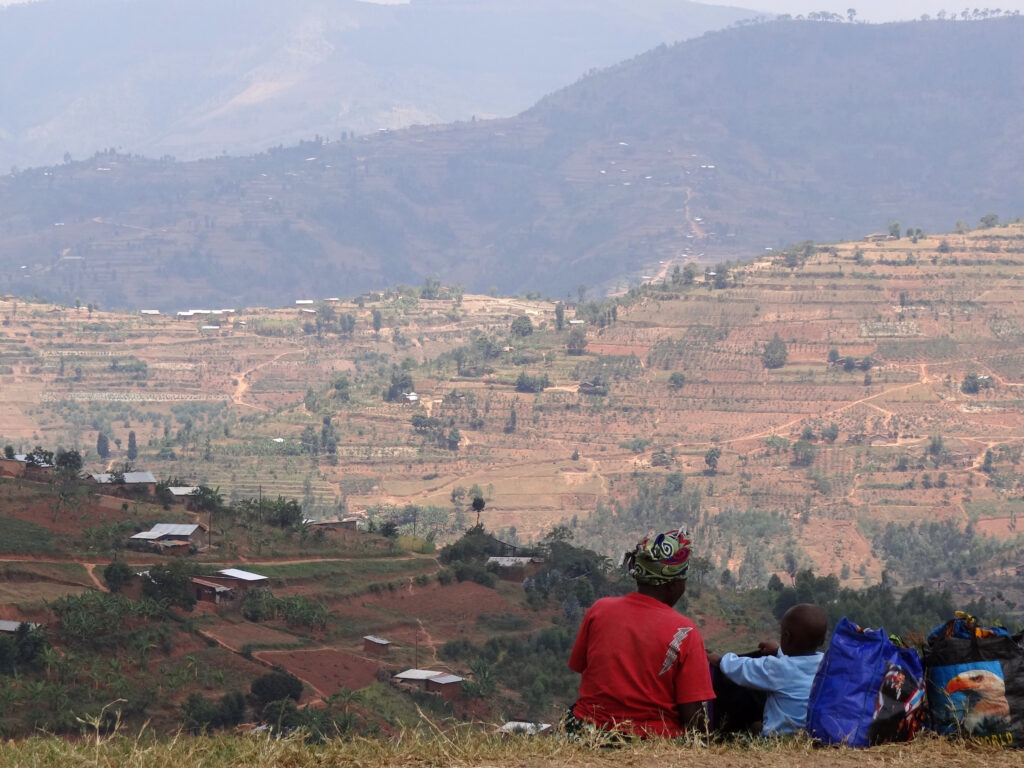
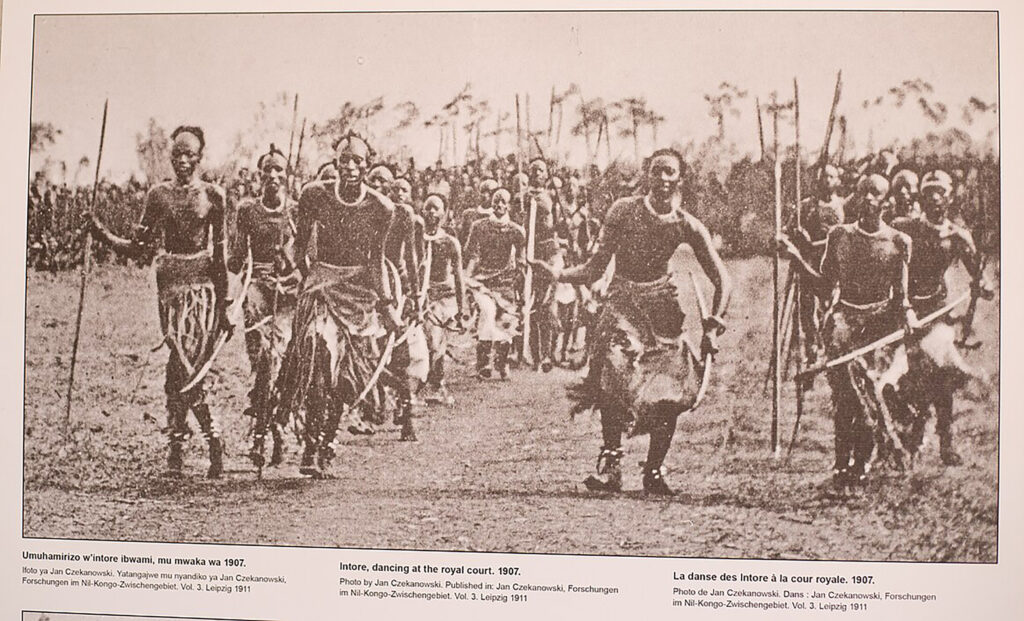
After the Second World War, Rwanda became part of a UN trust territory destined to become independent. The Tutsi wanted early independence; the Hutu favoured an emancipation pathway. This division led to the Rwandan Revolution in 1959, with Hutu murdering Tutsi and forcing 100 000 Tutsi to seek refuge in neighbouring countries. Complex political moves led to a referendum and eventual independence in 1962.
Nothing was solved. Violent outbreak followed violent outbreak. The Tutsi attacked from outside the country’s borders. Hutu retaliated and repressed the Tutsi. Whilst the 1973 military coup continued to favour the Hutu, economic stability meant less violence against the Tutsi.
In 1990, however, Tutsi living outside the country invaded, calling themselves the Rwandan Patriotic Front (RPF). A civil war ensued and by 1992, the pro-Hutu government was weakened and a coalition agreement with the RPF was signed.
This ceasefire came to a violent end on 6 April 1994. President Habyarimana was killed when his plane was shot down, and the genocide began hours later. A genocide that had been foretold.
Mother Mary’s message
In 1981, three Rwandan schoolgirls claimed they were told by the Virgin Mary that Rwanda would become a hell on Earth in a conflict that would see rivers run red with blood.
It could be argued that against the background of their country’s long violent history, generational trauma could have affected those three teenagers, influencing their dreams and even their waking hours.
Our Lady of Kibeho was added to the recognised visitations of the Virgin Mary to our world’s young people.
The notion that the Virgin Mary would appear to three girls in a boarding school in the middle of Africa was highly questionable. The dramatic prediction must surely have its roots in the stories passed down the generations of past carnage and violence recalled by village elders.
And yet—these apparitions were remembered. In 2001 their authenticity was validated by Pope John Paul II. Our Lady of Kibeho was added to the recognised visitations of the Virgin Mary to our world’s young people.
“Mother of the Word”
It was 16-year-old Alphonsine Mumureke who first heard that terrible warning that would come to fruition more than a decade later.
A pretty girl, Alphonsine was the daughter of Thaddée Gakwaya and Mary Immaculate Mukarasana. Born on 21 March 1965 in the Diocese of Kibungo, she started her secondary studies at Kibeho College in October 1981. This Catholic boarding school was founded by Fr Grégoire Kamugisha. Today it is known as Groupe Scolaire Mere de Verbe, or School of the Mother of the Word.
Alphonsine and Nathalie dedicated their lives in different ways to follow the pathway that the Blessed Mary seemed to have prophesied for them
“Mother of the Word” is how the Virgin Mary introduced herself to Alphonsine when on 28 November 1981, she appeared in the school cafeteria, floating above the floor, her hair covered, her feet bare.
Not surprisingly, when this new girl in the school told her fellow pupils about this apparition and the words spoken, she was laughed at. Her teachers scolded her and the villagers ostracised her. After all, who was this kid who claimed the Mother of Jesus had spoken to her? And that warning—life was dangerous enough in this divided country without spouting nonsense about rivers of blood.
But then, another girl said she had also seen the Virgin Mary.
Prayers for the world
Nathalie Mukamazimpaka was in Grade 4 at Kibeho College when on 12 January 1982 the Blessed Virgin sought incessant prayer for a world hastening its ruin and at risk of “falling into the abyss”.
Nathalie came from the Diocese of Gikongoro. In 1968, at the age of four, her parents, Laurent Ngango and Gaudence Mukabaziga had her baptised. She had almost finished her studies when she experienced her first vision. She had intended to become a primary school teacher, but on 24 June 1982, the Blessed Virgin asked Nathalie to remain at Kibeho and, until further notice, fully engage herself in prayer life and mortifications for the salvation of the world.
After this apparition, she quit her studies and stayed close to where she had seen the visions at Kibeho, calling the Blessed Mary “Umubyeyi”, or “mother”.
Nathalie’s claims were, like Alphonsine’s, ridiculed, questioned, and gained widespread attention. She too, was later the subject of intense interrogation. Her character, her lifestyle, her personal circumstances all came under scrutiny as the veracity of her claims was investigated.
“Alphonsine of the Glorious Cross”
The initial mockery from her peers was possibly easier for Alphonsine Mumureke to deal with than the subsequent rigorous investigation by the Church authorities to ascertain the truth. This youngster to whom the Virgin Mary first appeared, saw several apparitions over the next eight years, the last on 28 November 1989.
She had graduated from Kibeho in July of that year with a secretarial qualification. She wanted to join the Benebikira Sisters, but the religious congregation was as sceptical as her school friends, her teachers, and her family.
Until these apparitions could be authenticated by the Church, she would be one of the children who said they saw visions, not one of the children who actually did see them. There were those less doubtful in the Church, however.
Alphonsine was employed as a secretary by the Butare Diocesan Service Centre for Catholic Education and remained in that position when it became the Diocese of Gikongoro in 1992.
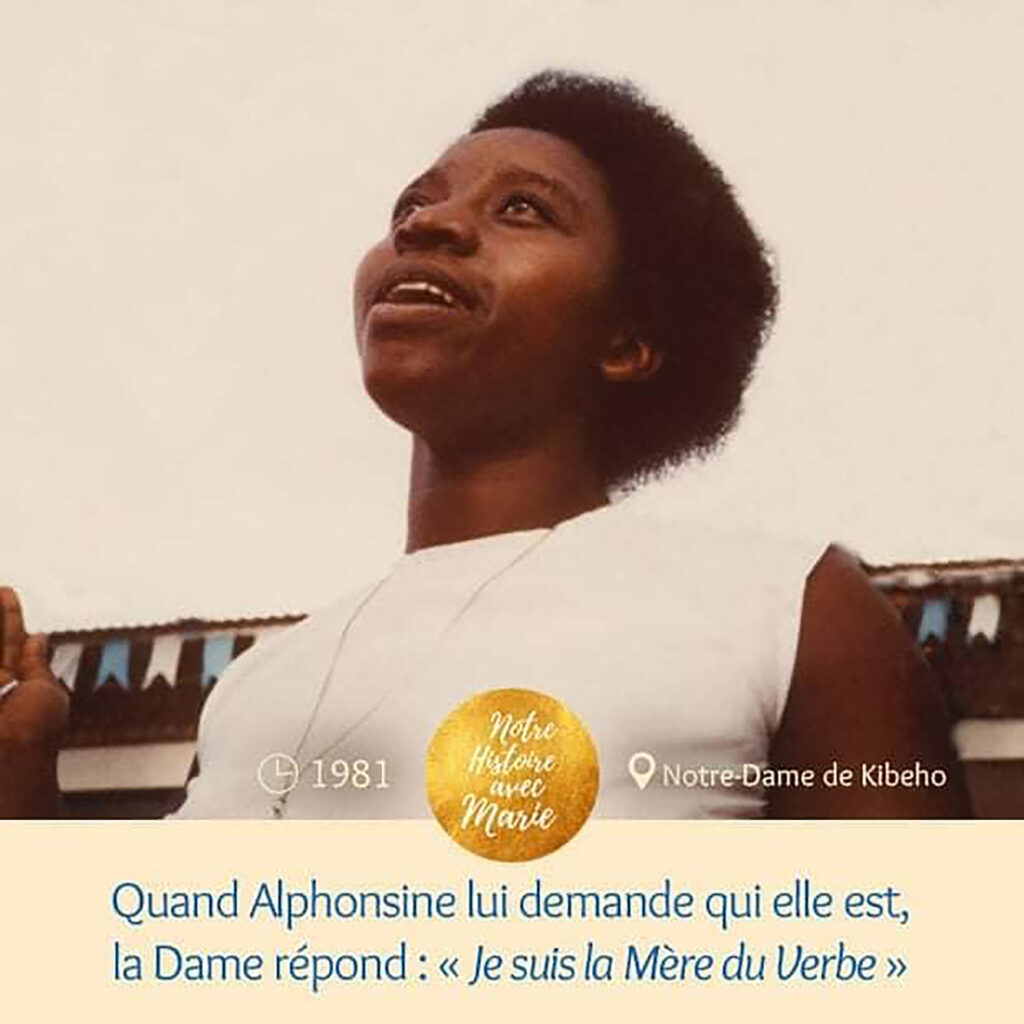
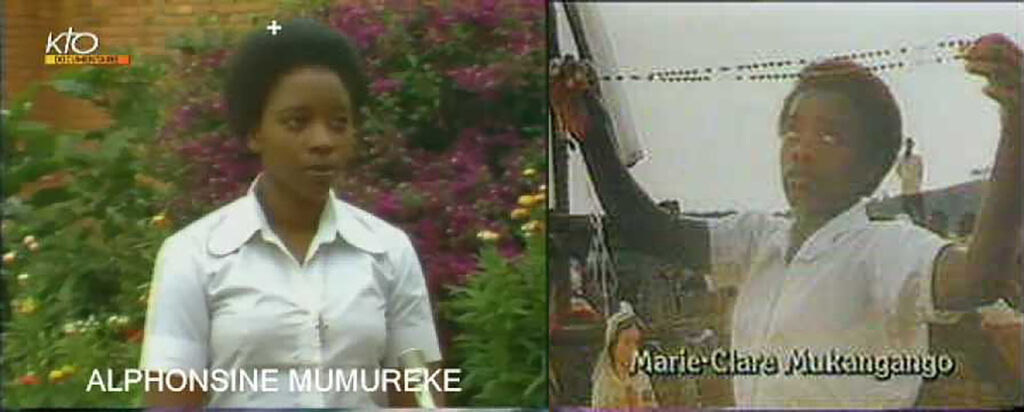
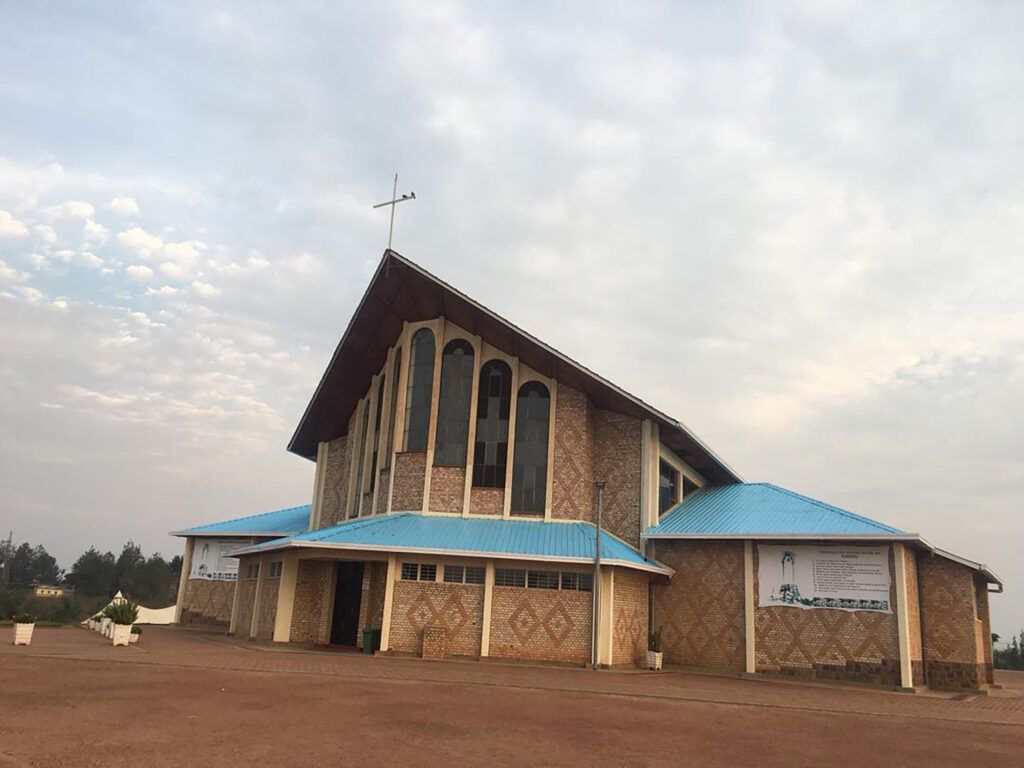
In 1994 she fled from there to escape the genocide, when the rivers did indeed run with blood. She sought safety in Bukavu (then Zaire, now DR Congo) with families who had known her since her schooldays, then went on to Abidjan in the Ivory Coast where she met up with a Marian priest who had known her since her last apparition in 1989.
Fr Raymond Halter became her spiritual director until his death in 1998. She was awarded a scholarship in business studies in Abidjan, although she still wished to join a religious order. A flurry of correspondence between the Abidjan clergy led her to the Catechetical School, affiliated to the Catholic University of West Africa in Abidjan.
She became an aspirant in the order of Saint Claire and when she graduated in theology in 2003, she entered the Poor Clares’ convent of Sainte Claire in Abidjan, beginning her novitiate in 2004. In 2006 Alphonsine was given the name “Alphonsine of the Glorious Cross”.
Alphonsine and Nathalie dedicated their lives in different ways to follow the pathway that the Blessed Mary seemed to have prophesied for them, at the time when she also made those devastating predictions that led them to flee the country.
Founder Nathalie Mukamazimpaka
Like Alphonsine, when the genocide unfurled in 1994, Nathalie had to flee for her own safety. At first, she stayed at the Bishop’s residence in Gikongoro, then fled to Bukavu, where Trappists and then a community of the Daughters of Mary Queen of the Apostles looked after her and other Rwandan refugees. All had witnessed the onset of the hell of the genocide.
For Nathalie and Alphonsine, the words of the Virgin Mary must have played in their minds throughout their exile.
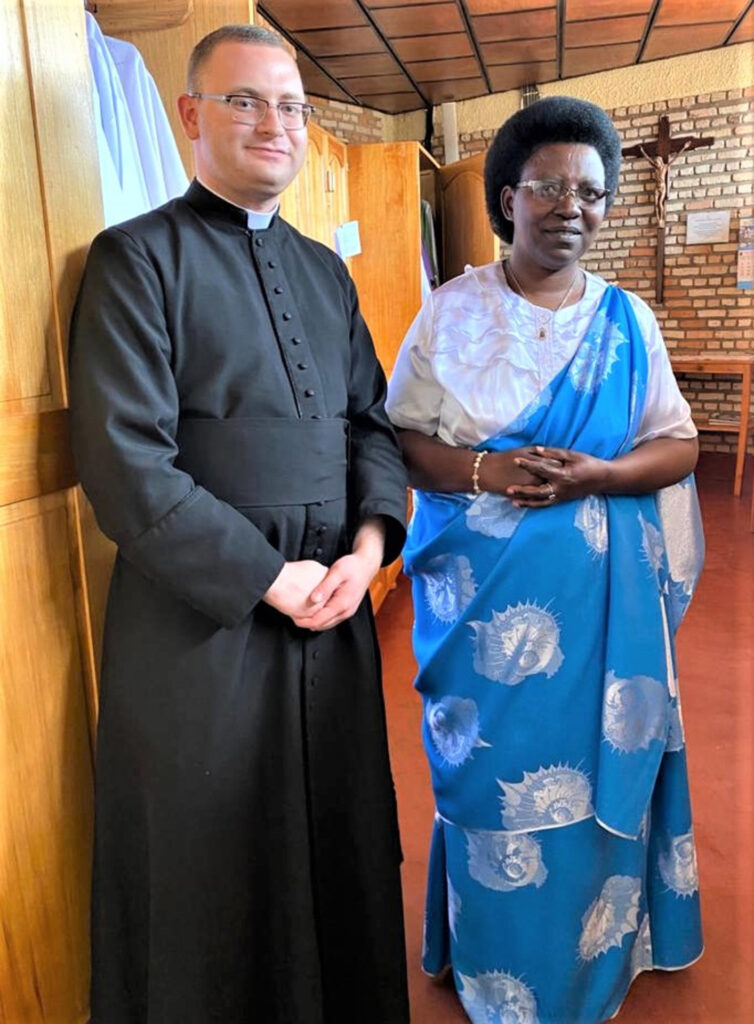
Nathalie returned to Rwanda in December 1996, where she found the Benebikira Sisters re-opening their convent, school and health centre at Kibeho. This strengthened her intention to stay and commit herself to the Marian shrine, praying with the pilgrims.
The third girl who experienced the visions was Marie Claire Mukangango, who was born in 1961 to Basera and Véronique Nyiratuza in the Gikongoro Diocese. She was in Grade 4 at Kibeho College when she too saw the Blessed Virgin.
Message on repentance
For her, the message concerned the Rosary of the Seven Sorrows of the Virgin Mary and its urgent call to repentance. The Mother of God’s message for us all, delivered through Marie Claire on 2 March 1982, was “Repent, repent, repent! Convert while there is still time”.
And of course, like Nathalie and Alphonsine, Marie Claire was not believed. If truth be told, both Nathalie and Marie Claire had joined in the jeering when Alphonsine had shared her vision. Now, with their own experience of visions, they had to retract their disbelief and seek the understanding of teachers and fellow pupils. Marie Claire’s visions lasted for six months.
She went on to be a primary school teacher. She married Elie Ntabadahiga, a journalist who was also studying at university. He was appointed to the Prime Minister’s office immediately before the genocide. He and Marie Claire were taken to the supposedly safe zone of Byumba, where in fact many unarmed civilians were massacred. Some witnesses said Marie Claire died defending Elie. Others suggested he was kidnapped and taken with other victims to an unknown destination.
Church validations
Some 33 youngsters claimed to have seen visions between 28 November 1981 and 29 November 1983. This could have been judged as mass hysteria. Even so, two Church commissions were initiated — one medical and one theological. The first eight youngsters to have reported visions were chosen as a sample group to be investigated. Twenty years later, the two commissions completed their investigation, reporting that only three showed the required criteria of credibility and confidence. On 29 June 2001, the Bishop of Gikongoro declared that the visions of Alphonsine, Nathalie and Marie Claire were authentic. Among the reasons given for this decision were:
“The frightening visions of August 15th, 1982, which proved to be prophetic due to the human dramas in Rwanda and throughout the country of the Great Lake region in recent years”;
“The content of the message, remaining consistent, relevant, and orthodox”;
“The spiritual fruit already borne by these events, all across the country and even abroad.”
Today, the Shrine of Our Lady of Kibeho is a touchstone for those attempting to make sense of our violent world.

